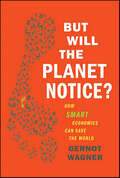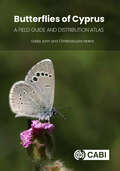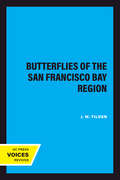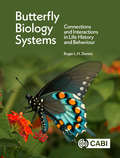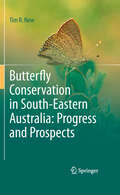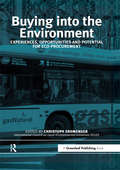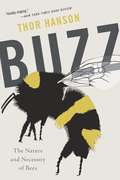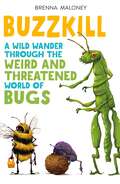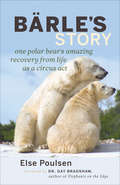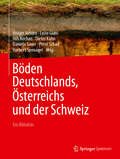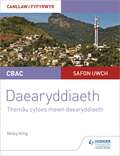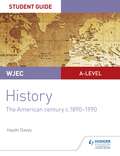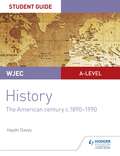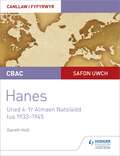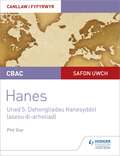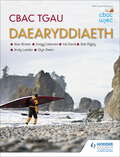- Table View
- List View
Business, Peacebuilding, and Regulation: The Role of the State (Business and Peacebuilding)
by Sean MolloyThis book examines the relationship between business-based peacebuilding and the opportunities that emerge from the pluralisation of regulation. The core message is, notwithstanding the broad range of regulatory initiatives and actors that exist in conflict-affected settings, the state should assume responsibilities for defining the types of contribution that business can and ought to make to peace. It also demonstrates how the state, through different forms and methods of regulation, is well-placed to engage businesses to do so. It is particularly concerned with the potential for regulation to help address what is identified as a state of optimistic uncertainty in the field of business and peacebuilding. On one level, there is a sense of optimism around the types of contributions that businesses can and often do make as agents for peace. On another, there are varying degrees of uncertainty surrounding the actual peacebuilding impacts of business activities; how businesses are to understand the ways in which to make these contributions, and why businesses would do so. Regulation, this book will argue, can play an important role in bridging the chasm between optimism and uncertainty. This book will be of interest to those engaged not only with business and peacebuilding but also business and human rights, business and development and business and the environment. Moreover, this book is also of contemporary interest in other ways – the aftermath of the Ukranian conflict, as an example, will require a concerted effort to rebuild that society after war. Private sector actors could be a powerful vehicle for reconstruction and development and this book examines how regulation can be used to facilitate businesses involvement in peacebuilding efforts.
But Will the Planet Notice?: How Smart Economics Can Save the World
by Gernot WagnerYou are one of seven billion people on Earth. Whatever you or I do personally—eat tofu in a Hummer or hamburgers in a Prius—the planet doesn't notice. In our confrontation with climate change, species preservation, and a planet going off the cliff, it is what several billion people do that makes a difference. The solution? It isn't science, politics, or activism. It's smarter economics. The hope of mankind, and indeed of every living thing on the planet, is now in the hands of the dismal science. Fortunately, we've been there before. Economists helped crack the acid rain problem in the 1990's (admittedly with a strong assist from a phalanx of lawyers and activists). Economists have helped get lead out of our gas, and they can explain why lobsters haven't disappeared off the coast of New England but tuna is on the verge of extinction. More disquietingly, they can take the lessons of the financial crisis and model with greater accuracy than anyone else the likelihood of environmental catastrophe, and they can help save us from global warming, if only we let them.
Butterflies of Cyprus: A Field Guide and Distribution Atlas
by Eddie John Christodoulos MakrisThis new book summarises decades of research and collation of distributional data. From the tiny Freyeria trochylus (Grass Jewel), Europe's smallest butterfly, to the magnificent, newly arrived Papilio demoleus (Lime Swallowtail), this comprehensively illustrated reference book and field guide includes all butterfly species known in Cyprus over the past 100 years. Where applicable, reference is made to subspecies of related taxa present in nearby countries of the eastern Mediterranean. The images on the cover represent the island's seven endemics, discussed in depth. Included, too, are detailed distribution maps representing records garnered from almost 300 recorders/sources (particularly members of the Cyprus Butterfly Study Group), over a period of more than 20 years.
Butterflies of the San Francisco Bay Region (California Natural History Guides #12)
by J. W. TildenThis title is part of UC Press's Voices Revived program, which commemorates University of California Press’s mission to seek out and cultivate the brightest minds and give them voice, reach, and impact. Drawing on a backlist dating to 1893, Voices Revived makes high-quality, peer-reviewed scholarship accessible once again using print-on-demand technology. This title was originally published in 1965.
Butterfly Biology Systems: Connections and Interactions in Life History and Behaviour
by Roger L DennisIn Butterfly Biology Systems Roger Dennis explores key topics and contentious issues in butterfly biology, specifically those in life history and behaviour. Uniquely, using a systems approach, the book focuses on the degree of integration and feedback between components and elements affecting each issue, as well as the links between different issues. The book comprises four sections. The first two sections introduce the reader to principles and approaches for investigating complex relationships, and provide a platform of knowledge on butterfly biology. The final two sections deal in turn with life history and behaviour, covering key issues affecting different stages of development from eggs to adults. The book is extensively illustrated with original diagrams and models, all of which have detailed legends, produced to enhance a broader understanding, and to provide templates for future research. It includes a detailed bibliography and glossary providing an essential gateway to the extensive literature on butterfly biology. Butterfly Biology Systems is essential reading for graduate students and researchers in insect ecology, evolution, behaviour and conservation. It will also be of great value to anyone interested in butterflies. Introduces a systems approach to butterfly biology Includes succinct reviews of the key interrelationships in butterfly life history and behaviour Illustrates more than 100 models to advance research into butterfly biology systems
Butterfly Conservation in South-Eastern Australia: Progress And Prospects
by Tim R. NewA survey of the development and practice of butterfly conservation in south east Australia, tracing evolution of the science through a series of cases from focus on single subspecies through increasing levels of ecological complexity to critical biotopes and communities. The book summarises much previously scattered information, and provides access to much regional information of considerable interest to practitioners elsewhere.
Buying into the Environment: Experiences, Opportunities and Potential for Eco-procurement
by Christoph ErdmengerGreen purchasing - or eco-procurement - by local and central governments has long been recommended in documents such as Agenda 21 to be a key - although sometimes supplemental-ingredient in the achievement of more environmentally responsible economies. Certainly, sustainable consumption cannot be considered a realistic goal without the full engagement of public authorities. Many initiatives have been undertaken in OECD countries, most successfully in Japan and Denmark where green public purchasing has been proven to be workable and highly effective, while, in other countries, city municipalities have successfully pioneered the development of sophisticated public environmental purchasing policies. However, for the vast majority of countries and their major cities, the potential for green public purchasing remains woefully untapped. A key question is what would be the environmental impact if the majority of cities in Europe replicated the success stories of those leading the way? Public procurement has, after all, been an important tool in achieving other public policy goals such as defence. Why should it not be used as a tool to defend the environment?The RELIEF project, funded by the EU's "City of Tomorrow and Cultural Heritage" programme was established to answer exactly this question: to define the true potential of eco-procurement and to develop a strategy for change in Europe. Buying into the Environment is the result of the research segment of the project which has now been completed. A further stage-to design a Europe-wide action plan will follow in 2004.The book, organised under the auspices of the International Council on Local Environmental Initiatives (ICLEI) analyses national approaches already tested, and provides in-depth surveys on the pioneer cities such as Hamburg, Malmo and Zurich. Serious attention is given to city-specific hurdles which have been faced and overcome. The most relevant product groups for eco-procurement such as construction, transport, energy, information technology, furniture and food. are also analysed.Uniquely, the book also provides calculations on the environmental benefits potentially achievable through greener purchasing. Tools were developed and tested by the RELIEF researchers on the environmental assessment of products, public buying power and on evaluations of market conditions in order to provide scenarios for the application of green purchasing at a European level. The conclusions are that there is huge potential for both local and central governments to adapt their behaviour patterns and purchase in a more environmentally responsible way. For example, 18% of the EU's Kyoto Protocol commitment could be achieved if major cities in the European Union purchased green electricity. The results are complemented by new ideas on how best to foster innovation in public contractual arrangements-to encourage the development of products such as super-energy-efficient computers and fuel cells-and how the legal system may require adaptation and reform.The results presented in this book will provide an indispensable resource for municipalities, governments, researchers and business practitioners looking for answers on how public procurement can have a fundamental and manifestly positive effect on the environment.
Buzz: The Nature and Necessity of Bees
by Thor HansonFrom the award-winning author of The Triumph of Seeds and Feathers, a natural and cultural history of the buzzing wee beasties that make the world go round.Bees are like oxygen: ubiquitous, essential, and, for the most part, unseen. While we might overlook them, they lie at the heart of relationships that bind the human and natural worlds. In Buzz, the beloved Thor Hanson takes us on a journey that begins 125 million years ago, when a wasp first dared to feed pollen to its young. From honeybees and bumbles to lesser-known diggers, miners, leafcutters, and masons, bees have long been central to our harvests, our mythologies, and our very existence. They've given us sweetness and light, the beauty of flowers, and as much as a third of the foodstuffs we eat. And, alarmingly, they are at risk of disappearing.As informative and enchanting as the waggle dance of a honeybee, Buzz shows us why all bees are wonders to celebrate and protect. Read this book and you'll never overlook them again.
Buzzkill: A Wild Wander Through the Weird and Threatened World of Bugs
by Brenna MaloneyThe praying mantis is the only animal on Earth with one ear—and it’s in the middle of its chest. Aphids are born pregnant. Moths can’t fly during an earthquake. If you didn’t know these things, you soon will. Packed full of jaw-dropping facts, Buzzkill presents the big picture on bugs. You might think ew, gross. Insects are icky. Or scary. Or dangerous. They can be. But there’s so much more you need to know.Insects play a critical role on our planet, from sustenance to pollination to medicines and more. Brenna Maloney tackles both the wacky and weird, as well as threats to insects and their habitats, their possible extinction, and ways that everyday people, like you, can prevent their decline.Find out what all the buzz is about!Godwin BooksA JUNIOR LIBRARY GUILD GOLD STANDARD TITLE
By the Seashore
by Maurice Pledger A. J. Wood Becki WardMany things to see and feel-- Crusty coral, a furry seal, Seashells of all shapes and sizes-- An ocean full of nice surprises. Combining wonderful illustrations with lift-a-flaps and touch-and-feel components, this unique book introduces children to the different textures that they might find on the seashore.
Bärle's Story: One Polar Bear's Amazing Recovery from Life as a Circus Act
by Else PoulsenThe award-winning zookeeper and author of Smiling Bears shares her account of rescuing and rehabilitating a bear held in a Caribbean circus. When a nineteen-year-old female polar bear named Barle is rescued from the inhumane conditions of a circus in the Caribbean and flown to safety in Detroit, zookeeper Else Poulsen—renowned throughout the world for her work rehabilitating abused bears—is on hand to meet her and help her on the road to recovery and self-discovery. Thus begins Barle&’s gradual introduction into the world of polar bears. Slowly she forges relationships with the other bears in the zoo and eventually mates with a young male and successfully raises a cub. By living in a caring, enriched environment focused on her welfare, Barle is able to recover from the trauma she had suffered at the circus and develop skills that are important to thriving as a polar bear. As Poulsen documents, however, not all captive bears are so fortunate. Augmented with black-and-white photographs, Barle&’s Story provides a rich and moving portrayal of a remarkable bear and of the author&’s inspiring work to help her discover her true polar bear ways.Praise for Barle&’s Story &“This intelligent, stark, and gently humorous book makes one think that if all animals were listened to in the way that…Poulsen listens to bears, our children would inherit an infinitely kinder and safer world that the one they enjoy now.&” —Dr. Jill Robinson MBE, founder and CEO, Animals Asia Foundation &“At once deeply heart-wrenching, heart-warming, and heartful. Read this wonderful book and share it widely.&” —Dr. Marc Bekoff, author of Why Dogs Hump and Bees Get Depressed
Böden Deutschlands, Österreichs und der Schweiz: Ein Bildatlas
by Peter Schad Holger Joisten Luise Giani Nils Kochan Dieter Kühn Daniela Sauer Herbert SponagelBöden sind eine Lebensgrundlage der Menschheit. Sie kennenzulernen ist nicht nur wichtig, sondern auch außerordentlich faszinierend. Dieser Bildatlas zeigt die Vielfalt unserer Böden, erklärt ihre Entstehung, ihre Eigenschaften, ihre Gefährdung und wie wir sie schützen können.200 Bodenprofile werden mit charakteristischen Boden- und Landschaftsbildern vorgestellt, mit detaillierten Beschreibungen erläutert und durch Analysendaten ergänzt. Jedes Profil wird nach der Bodenkundlichen Kartieranleitung (KA5) boden- und substratsystematisch eingeordnet. Auch werden die Bezeichnungen dieser Böden nach der internationalen „World Reference Base for Soil Resources“ (WRB) angegeben. Zahlreiche Karten zeigen die Verbreitung von Bodenregionen und Bodenklassen. Darstellungen der Abfolge der Böden in der Landschaft (Catenen) ordnen die Böden in ihre Umgebung ein. Zum besseren Verständnis sind wichtige bodenkundliche Sachverhalte in Einführungskapiteln anschaulich erklärt.Dieses Buch ist das Werk von 44 Autorinnen und Autoren sowie sieben Herausgebern, die ihr umfangreiches Experten- und Regionalwissen eingebracht haben. Es richtet sich sowohl an ein Fachpublikum, an Lernende und Lehrende, als auch an diejenigen, die sich bisher nicht mit Böden beschäftigt haben, die jedoch an der Vielfalt unserer Böden, ihrer Schönheit und ihrem landschaftsbezogenen Vorkommen interessiert sind.
CBAC Safon Uwch Daearyddiaeth – Canllaw i Fyfyrwyr 6: Themâu Cyfoes mewn Daearyddiaeth (WJEC/Eduqas A-level Geography Student Guide 6: Contemporary Themes in Geography Welsh-language edition)
by Nicky KingExam Board: WJEC/EduqasLevel: AS/A-levelSubject: GeographyFirst teaching: September 2016First exams: Summer 2017 (AS), Summer 2018 (A-level)Reinforce students' geographical understanding throughout their course; clear topic summaries with sample questions and answers help students improve their exam technique and achieve their best.Written by a teacher with extensive examining experience, this guide:- Helps students identify what they need to know with a concise summary of the topics examined at AS and A-level- Consolidates understanding through assessment tips and knowledge-check questions- Offers opportunities for students to improve their exam technique by consulting sample graded answers to exam-style questions- Develops independent learning and research skills- Provides the content students need to produce their own revision notes
CBAC Safon Uwch Daearyddiaeth – Canllaw i Fyfyrwyr 6: Themâu Cyfoes mewn Daearyddiaeth (WJEC/Eduqas A-level Geography Student Guide 6: Contemporary Themes in Geography Welsh-language edition)
by Nicky KingExam Board: WJEC/EduqasLevel: AS/A-levelSubject: GeographyFirst teaching: September 2016First exams: Summer 2017 (AS), Summer 2018 (A-level)Reinforce students' geographical understanding throughout their course; clear topic summaries with sample questions and answers help students improve their exam technique and achieve their best.Written by a teacher with extensive examining experience, this guide:- Helps students identify what they need to know with a concise summary of the topics examined at AS and A-level- Consolidates understanding through assessment tips and knowledge-check questions- Offers opportunities for students to improve their exam technique by consulting sample graded answers to exam-style questions- Develops independent learning and research skills- Provides the content students need to produce their own revision notes
CBAC Safon Uwch Hanes Canllaw i Fyfyrwyr Uned 3 (WJEC A-level History Student Guide Unit 3 (WJEC A-level History Student Guide Unit 3 (WJEC A-level History Student Guide Unit 3 (WJEC A-level History Student Guide Unit 3: The American century c.1890-1990; Welsh language ed): American Century Epub
by Haydn DaveyExam board: WJECLevel: AS/A-levelSubject: HistoryFirst teaching: September 2015First exams: Summer 2016 (AS); Summer 2017 (A-level)Build, reinforce and revise the historical knowledge and exam skills required for WJEC AS/A-level History.Matched to the 2016 specification for Wales, this study guide contains clear content summaries and annotated sample answers to exam questions.- Concisely covers the key issues and content in the specification, breaking the Unit down into manageable chunks- Consolidates understanding with regular knowledge-check questions, plus useful tips- Builds the analytical and evaluative skills that students need to succeed in AS/A-level History- Improves students' exam technique, providing sample student answers to past paper questions, with commentary to explain the number of marks awarded- Helps students to learn the content throughout the course, study independently and revise for their exams
CBAC Safon Uwch Hanes – Canllaw i Fyfyrwyr Uned 3: Canrif yr Americanwyr, tua 1890–1990 (WJEC A-level History Student Guide Unit 3: The American century c.1890-1990; Welsh language ed)
by Haydn DaveyExam board: WJECLevel: AS/A-levelSubject: HistoryFirst teaching: September 2015First exams: Summer 2016 (AS); Summer 2017 (A-level)Build, reinforce and revise the historical knowledge and exam skills required for WJEC AS/A-level History.Matched to the 2016 specification for Wales, this study guide contains clear content summaries and annotated sample answers to exam questions.- Concisely covers the key issues and content in the specification, breaking the Unit down into manageable chunks- Consolidates understanding with regular knowledge-check questions, plus useful tips- Builds the analytical and evaluative skills that students need to succeed in AS/A-level History- Improves students' exam technique, providing sample student answers to past paper questions, with commentary to explain the number of marks awarded- Helps students to learn the content throughout the course, study independently and revise for their examsPlease note: This is a Welsh-language edition.
CBAC Safon Uwch Hanes – Canllaw i Fyfyrwyr Uned 3: Canrif yr Americanwyr, tua 1890–1990 (WJEC A-level History Student Guide Unit 3: The American century c.1890-1990; Welsh language ed)
by Haydn DaveyExam board: WJECLevel: AS/A-levelSubject: HistoryFirst teaching: September 2015First exams: Summer 2016 (AS); Summer 2017 (A-level)Build, reinforce and revise the historical knowledge and exam skills required for WJEC AS/A-level History.Matched to the 2016 specification for Wales, this study guide contains clear content summaries and annotated sample answers to exam questions.- Concisely covers the key issues and content in the specification, breaking the Unit down into manageable chunks- Consolidates understanding with regular knowledge-check questions, plus useful tips- Builds the analytical and evaluative skills that students need to succeed in AS/A-level History- Improves students' exam technique, providing sample student answers to past paper questions, with commentary to explain the number of marks awarded- Helps students to learn the content throughout the course, study independently and revise for their examsPlease note: This is a Welsh-language edition.
CBAC Safon Uwch Hanes – Canllaw i Fyfyrwyr Uned 4: Yr Almaen Natsïaidd, tua 1933–1945 (WJEC A-level History Student Guide Unit 4: Nazi Germany c.1933-1945: Welsh language edition)
by Gareth HoltExam board: WJECLevel: AS/A-levelSubject: HistoryFirst teaching: September 2015First exams: Summer 2016 (AS); Summer 2017 (A-level)Build, reinforce and revise the historical knowledge and exam skills required for WJEC AS/A-level History.Matched to the 2016 specification for Wales, this study guide contains clear content summaries and annotated sample answers to exam questions.- Concisely covers the key issues and content in the specification, breaking the Unit down into manageable chunks- Consolidates understanding with regular knowledge-check questions, plus useful tips- Builds the analytical and evaluative skills that students need to succeed in AS/A-level History- Improves students' exam technique, providing sample student answers to past paper questions, with commentary to explain the number of marks awarded- Helps students to learn the content throughout the course, study independently and revise for their examsPlease note: This is a Welsh-language edition.
CBAC Safon Uwch Hanes – Canllaw i Fyfyrwyr Uned 4: Yr Almaen Natsïaidd, tua 1933–1945 (WJEC A-level History Student Guide Unit 4: Nazi Germany c.1933-1945: Welsh language edition)
by Gareth HoltExam board: WJECLevel: AS/A-levelSubject: HistoryFirst teaching: September 2015First exams: Summer 2016 (AS); Summer 2017 (A-level)Build, reinforce and revise the historical knowledge and exam skills required for WJEC AS/A-level History.Matched to the 2016 specification for Wales, this study guide contains clear content summaries and annotated sample answers to exam questions.- Concisely covers the key issues and content in the specification, breaking the Unit down into manageable chunks- Consolidates understanding with regular knowledge-check questions, plus useful tips- Builds the analytical and evaluative skills that students need to succeed in AS/A-level History- Improves students' exam technique, providing sample student answers to past paper questions, with commentary to explain the number of marks awarded- Helps students to learn the content throughout the course, study independently and revise for their examsPlease note: This is a Welsh-language edition.
CBAC Safon Uwch Hanes – Canllaw i Fyfyrwyr Uned 5: Dehongliadau Hanesyddol (asesu di-arholiad) WJEC A-level History Student Guide Unit 5: Historical Interpretations (non-examined assessment; Welsh language edition)
by Phil StarExam board: WJECLevel: AS/A-levelSubject: HistoryFirst teaching: September 2015First exams: Summer 2016 (AS); Summer 2017 (A-level)Maximise your chance of coursework success with this step-by-step guide to the WJEC A-level History NEA.- Explains how to understand, approach and successfully answer the question/essay title, with tips to highlight important information and common pitfalls- Develops students' skills in analysing and evaluating primary source material- Teaches students how to identify and test the validity of historical interpretations- Offers extensive advice on essay writing, including drafting an effective introduction and conclusion- Provides one complete example of the NEA with annotations/commentary that show how it could be improved- Keeps students on track as they complete activities that help to structure their progressPlease note: This is a Welsh-language edition.
CBAC Safon Uwch Hanes – Canllaw i Fyfyrwyr Uned 5: Dehongliadau Hanesyddol (asesu di-arholiad) WJEC A-level History Student Guide Unit 5: Historical Interpretations (non-examined assessment; Welsh language edition)
by Phil StarExam board: WJECLevel: AS/A-levelSubject: HistoryFirst teaching: September 2015First exams: Summer 2016 (AS); Summer 2017 (A-level)Maximise your chance of coursework success with this step-by-step guide to the WJEC A-level History NEA.- Explains how to understand, approach and successfully answer the question/essay title, with tips to highlight important information and common pitfalls- Develops students' skills in analysing and evaluating primary source material- Teaches students how to identify and test the validity of historical interpretations- Offers extensive advice on essay writing, including drafting an effective introduction and conclusion- Provides one complete example of the NEA with annotations/commentary that show how it could be improved- Keeps students on track as they complete activities that help to structure their progressPlease note: This is a Welsh-language edition.
CBAC TGAU Daearyddiaeth (WJEC GCSE Geography Welsh-language edition)
by Alan Brown Bob Digby Andy Leeder Glyn Owen Val Davis Gregg ColemanEndorsed by WJECDevelop your students' subject knowledge and skills using in-depth topic coverage and developmental activities to create your own teaching pathway through the core and optional content in the 2016 specifications, with support at every stage from the authors of the bestselling WJEC Student Book.- Contains coherent coverage of every core and optional theme in a single volume, with clear explanations of key concepts throughout- Engages and challenges students of all abilities with an exciting, thematic approach, brought to life by Welsh, UK and international place references- Improves students' ability to interpret, analyse and evaluate geographical information through practical, skills-focused activities that involve data, maps and photographs- Boosts candidates' confidence approaching examination by providing numerous learning opportunities for each assessed theme- Enables effective differentiation with enquiry tasks designed to stretch higher-ability students and encourage independent research- Includes trusted guidance from the Field Studies Council on suggested human and physical fieldwork projects and methodologies, making it easier to address the revised fieldwork criteriaThis is a Welsh-language edition.
CBAC TGAU Daearyddiaeth Ail Argraffiad (WJEC GCSE Geography Second Edition Welsh-language edition)
by Bob Digby Andy Leeder Andy Owen Glyn Owen Val Davis Gregg ColemanDevelop students' subject knowledge and skills. This fully revised edition features updated case studies, practice questions and clear presentation of key terms.> Contains coherent coverage of every core and optional theme in a single volume, with clear explanations of key concepts throughout> Engages and challenges students with an exciting, thematic approach, brought to life by Welsh, UK and international place references> Improves students' ability to interpret, analyse and evaluate geographical information through practical, skills-focused activities that involve data, maps and photographs> Boosts students' confidence approaching examination by providing extensive practice questions for each assessed themeThis book also includes coverage of the Eduqas GCSE Geography A specification.Please note: This is a Welsh language edition.
CBAC TGAU Daearyddiaeth Ail Argraffiad (WJEC GCSE Geography Second Edition Welsh-language edition)
by Bob Digby Andy Leeder Andy Owen Glyn Owen Val Davis Gregg ColemanDevelop students' subject knowledge and skills. This fully revised edition features updated case studies, practice questions and clear presentation of key terms.> Contains coherent coverage of every core and optional theme in a single volume, with clear explanations of key concepts throughout> Engages and challenges students with an exciting, thematic approach, brought to life by Welsh, UK and international place references> Improves students' ability to interpret, analyse and evaluate geographical information through practical, skills-focused activities that involve data, maps and photographs> Boosts students' confidence approaching examination by providing extensive practice questions for each assessed themeThis book also includes coverage of the Eduqas GCSE Geography A specification.Please note: This is a Welsh language edition.


